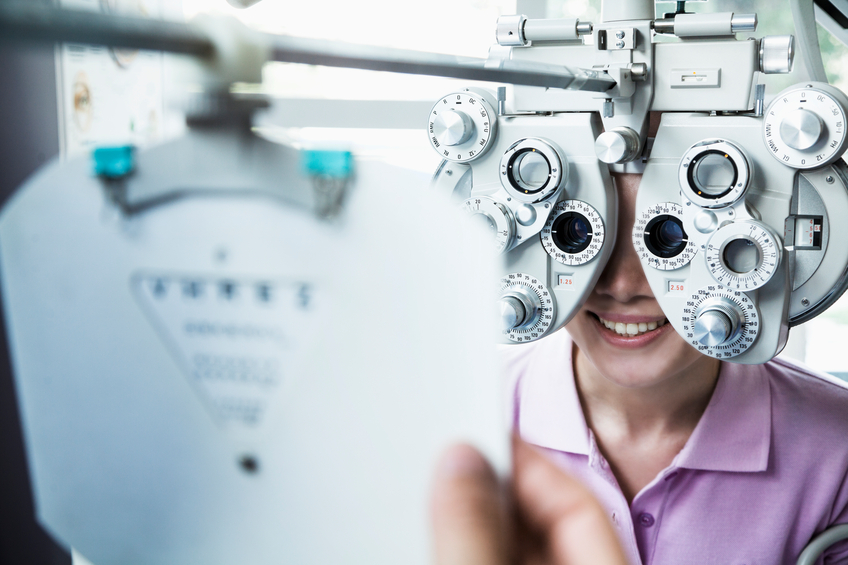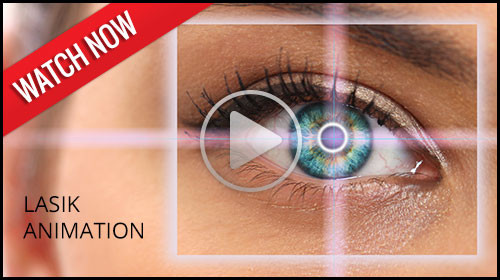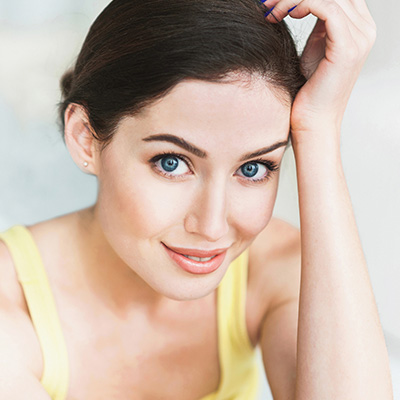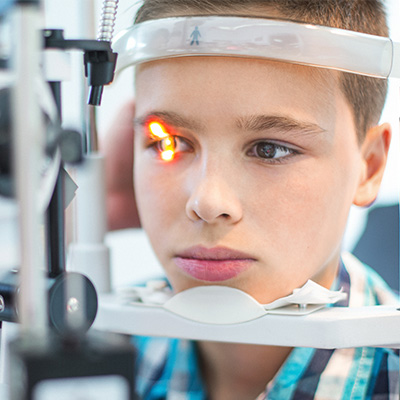Looking for Something?
Location & Hours
2248 D Street
La Verne, CA 91750
| Mon-Thurs: | 8:00am - 5:00pm |
| Friday: | 8:00am - 4:30pm |
| Sat & Sun: | Closed |
Our Services
As a fully licensed and equipped optometric practice, La Verne Optometry offers a complete range of eye care services to all our patients.
Whether the eye care issue involves correcting refractive errors with eyeglass or contact lenses, or helping a student find amazing frames, or diagnosing/treating eye conditions and diseases, our experienced team will identify and implement the best eye care solutions for you.
Eye Health Evaluation
With our years of experience in diagnosing and treating typical vision disorders such as nearsightedness, farsightedness, amblyopia, presbyopia, cataracts, macular degeneration and diabetic retinopathy, Brian M. Alva and Donald J. Guido and their team are equipped to provide appropriate therapeutic medical eye care.
At the same time, the La Verne Optometry team offers a wide array of high quality eye care products at reasonable prices. Our patients never pay too much for the best quality in eyeglasses, contact lenses, sunglasses, progressive and bifocal lenses, and outstanding service.
Treatment of Eye Disease
If you are diagnosed with an eye disease, you want the best treatment available to get your eyes healthy again. At La Verne Optometry, we stay current with best treatment practices. Based on your diagnosis, we may recommend a wide variety of approaches, including improved nutrition, prescription medicines, therapy and vision exercises, or medical procedures.
Good Eyecare Begins With A Yearly Eye Exam!
Although many do not realize it, the best way to protect your vision is with a yearly eye checkup. Even a basic eye exam can instantly detect many health-threatening conditions, such as tumors, vascular irregularities, and diabetes-related injury to the retina. At La Verne Optometry, that basic checkup is brief and painless.
Refractive Procedures
Dr. Brian Alva and La Verne Optometry are pleased to be your resource for Laser vision correction questions.
We have teamed up with Coastal Vision to provide all our patients with Laser vision correction options. Dr. Alva will assist you in the early stages of LASIK consideration by answering your questions, and if LASIK is right for you. Once we decide that LASIK is the right fit for you, Dr. Alva is actively involved in each step of the process, assuring that your primary eye doctor, who is most familiar with your ocular history, will be continuing as your doctor as you proceed through treatment and recovery.
If you are interested in Laser Vision Correction, call our office to make an appointment to determine if you are a candidate for this alternative to traditional glasses and contact lenses.
What are Refractive Procedures?
Refractive procedures manipulate the eye to improve vision. Though there are several types of refractive procedures, the most popular is known as LASIK (laser assisted in situ keratomileusis). LASIK involves reshaping the cornea using incisions and lasers. An incision creates a flap which is folded back. Lasers are then used to reshape the middle layer of the cornea and correct the vision. The flap is folded back and allowed to heal, resulting in much clearer vision. LASIK surgery is an outpatient procedure with recovery time of about 48 hours.
Is LASIK For Me?
Not everyone should consider a LASIK procedure. Candidates should be over 18 years of age. If you are pregnant, nursing, or suffering from a number of diseases, you probably are not eligible for LASIK. You are also not eligible if your prescription has changed a great deal over the past year. Talk to your eye doctor about LASIK. They will be able to assess your eligibility, the risks you may encounter, and they can recommend how to move forward.
Is the Procedure Safe?
In rare cases, there have been complications that have arisen after the procedure, including droopy eyelids, constant discomfort or the inability to wear contact lenses. In even rarer cases, there have been complications during the procedure. However, as technology improves, there will likely be a decrease in these instances.
"Keep your eye on the ball!" "Focus on the finish line!" "Don't lose sight of the green!" If there's one thing that seems to be a key to success in sports, it's vision. But did you know you can improve your performance by improving some aspects of your vision? It's easy to recognize problems, and even easier to solve them. The following are some aspects of vision which can be the difference between victory and defeat, and some exercises to improve performance.
Dynamic visual acuityis your ability to see objects when they are moving fast. This is important in sports like hockey, racquetball, and tennis. To improve dynamic visual acuity, cut out letters, stick them to a record turntable, and try to identify the letters at different speeds.
Visual concentration is your ability to ignore distractions happening around you. Your eyes naturally react to movement in the field of vision from spectators, other participants or the playing environment. To improve your visual concentration, have a friend stand nearby and wave their hands erratically while you practice.
Eye tracking is following an object with your eyes without much head motion. It is important with any sport that involves a fast-moving ball. Good eye tracking will improve balance and reaction time. You can improve your eye tracking by watching the flight of a ball while keeping a book balanced on your head.
Eye-hand-body coordination is how your muscles and limbs react to the information gathered by your eyes. It affects timing and body control. To improve your eye-hand-body coordination, jump up and down on an old mattress while a friend tosses you a tennis ball from a variety of angles. Catch the ball and toss it back.
Visual memory is the ability to process and remember a fast moving, complex picture of people and things. It is very important in basketball, hockey, and soccer, where the game quickly moves up the field. Visual memory helps you know where your teammates and opponents are positioned. To improve visual memory, look at a magazine page for a second, then turn the page. Try to reconstruct the images you just saw. When you?ve mastered the exercise, allow 5 seconds between seeing the image and reconstructing it.
Peripheral vision is the ability to see what is not directly in front of you, out of the corner of your eye. This allows you to see your teammate to your left or right while focusing on the goal in front of you. To make your peripheral vision more useful, try watching television with your head turned to one side or the other.
Visual reaction time is what allows a batter to hit the ball, or a tennis player to return a serve. It is the speed with which your brain interprets and reacts. To improve your visual reaction time, stand with your back to a friend. Have them toss a ball to you and yell, "Now!" When you hear the yell, turn around and try to catch the ball. By repeating this exercise, you can teach your brain to react more quickly.
Focus flexibility allows a quarterback to quickly focus on his receivers even though they are at varying distances. To improve focus flexibility, post a magazine page on a wall about 15 feet away at eye level in front of you. Hold a similar page in your hand out in front of you, so that it is slightly to one side of your view of the page on the wall. Focus on an object or words on the page on the wall. Then quickly switch focus to the page in your hand. By switching focus back and forth, you will improve your focus flexibility.
Depth perception lets you judge distance. This is especially important in basketball, golf, and other sports involving distance to the goal. To improve depth perception, have a friend point a straw at you, parallel to the ground, with the straw about two feet away from you. Practice quickly inserting a toothpick into the straw.
By improving aspects of your vision, you can improve your performance, no matter what sport you're involved in.
Did you know that 80% of everything a child learns, understands, and remembers is acquired through his or her visual system? Vision is very important in the learning process. What's worse is that one in four children have undiagnosed vision problems that affect their learning. Sometimes the problem is misdiagnosed as ADD (attention deficit disorder), ADHD (attention deficit hyperactivity disorder), or dyslexia.
It is important that children receive comprehensive visual exams starting as early in life as possible. Vision screenings at school are not sufficient as a basis for diagnosing vision problems. A comprehensive exam may find a visual problem missed during screenings, and your eye doctor can recommend treatment.
Your child may suffer from a visual problem if they exhibit any of the following characteristics:
- struggles with reading
- grows tired or frustrated with reading
- can't sit still or stay at a task for any length of time
- reverses words, numbers, or letters
- has difficulty remembering the spelling of words
- frequently loses their place, skips words, or skips lines of text while reading
- has poor reading comprehension
- has shown no improvement from medication or tutoring
- Children suffering from uncorrected vision problems may face many barriers in life - socially, academically, and athletically. Make sure your child's vision is developing well.
Low vision is a vision condition caused by several eye diseases, including cataracts, macular degeneration, and diabetic retinopathy. Few people today are totally without sight. Most have some sight, and suffer from low vision. Low vision can come in many forms, including loss of central vision, loss of side vision, blurred vision, generalized haze, extreme sensitivity to light, and night blindness.
Low vision should only be treated by trained optometrists who specialize in low vision. Low vision often requires different therapeutic treatments than other vision conditions. Optometrists who specialize in low vision can examine the patient and recommend treatment which may include therapy and/or low vision devices.
For more information, please ask your doctor.
Our Doctor is specially trained in the treatment of eye disease. With years of experience along with the latest instrumentation, we can promptly diagnose and treat most ocular conditions. If specific specialty care is required, we will refer you to the appropriate specialist. All necessary follow-up care will be conducted along with correspondence to your primary care physician when indicated.
Our doctor is experienced and certified in the diagnosis and treatment of ocular conditions such as conjunctivitis (pink eye), glaucoma and removing foreign objects that can become embedded into the front surface of the eye and lids.
Since eye Disease treatment is for medical conditions, we will be glad to provide you with proper documentation to process insurance claims. If you have questions regarding insurance coverage, we will be glad to answer them.
Your Eye Health & Contact Lenses
Whether you are considering contact lenses to be free of heavy or bothersome glasses, for sports and recreation, or just for looks you've made the right choice by contacting La Verne Optometry. Our clinical team is dedicated to fulfilling your contact lens expectations. We take pride in providing our patients with the most advanced contact lens analysis and design techniques to ensure a lifetime of healthy vision and comfortable lens wear.
Because contact lenses are a medical device regulated by the US Food and Drug Administration, it is imperative that we focus our design and follow-up care to promote excellent corneal health of our contact lens wearing patients. Did you know the cornea is the only tissue in the body that receives oxygen directly from the atmosphere?
This is a little known fact to most patients, but the most important factor in long term success with contact lenses. The amount of oxygen that gets to the cornea is reduced by wearing contact lenses, and in some cases can result in irreversible corneal damage. Early changes rarely cause pain or visual disturbance and can only be diagnosed when viewed microscopically.
Your Contact Lens Design and Follow-up Schedule
Once a comprehensive eye examination has been accomplished, and the doctor is convinced that your eyes are in excellent health, and you are a good candidate for contact lens wear-design services begin. In many cases we can perform the design services on the same day. For more complex prescriptions and specialty lenses it may be necessary to have you return on another day for this service.
All new contact lens patients are seen for a minimum of 2 or 3 office visits following the initial design and evaluation appointment. A careful corneal health check is performed at each follow-up visit, and then once annually after successful lens wear has been established.
Your Prescription and Contact Lenses
With today's advanced technology most prescriptions are available in contact lenses- from nearsighted and farsighted corrections to astigmatism and bifocals. While lenses can be made in nearly all prescriptions, not every patient has the necessary corneal attributes to sustain comfortable lens wear. You will find that the clinical staff at La Verne Optometry has a "can do" attitude when it comes to complicated prescriptions. If your motivation to wear lenses matches our willingness to go the extra mile in contact lens design, we can't help but succeed.
When You've Been Told Previously That you Can't Wear Contacts
Unless there is a medical diagnosis that prevents a patient from wearing contact lenses, it's unlikely that you won't be able to wear contact lenses. All too often we meet patients who have been told for years that they can't wear contacts, and we usually find that these patients simply have a more complex prescription.
This complexity means you probably can't wear the lenses available "just off the shelf". Success can usually be achieved with a specialty lens design or custom product. At La Verne Optometry we cater to the needs of anyone interested in wearing contact lenses, and will work diligently so that you might enjoy the benefits of a glasses free world. We carry a diverse inventory of diagnostic lenses and never hesitate to special order a lens we may not have on hand.
The Lens That's Right for You
Since there are so many lenses available, your final lens will be designed by the doctor after evaluating the health of your eyes and assessing your lifestyle needs in detail. You may want to consider options such as overnight wear, tinted lenses to change your eye color, or lenses you wear for a day and throw away.
Are There Risks with Contacts?
The most common complications with contact lenses include corneal changes due to hypoxia (low oxygen), higher incidence of eye infections, and allergic reactions. Most of these complications are the result of:
- Over wearing contact lenses
- Poor cleaning habits
- Ignoring potential warning signs, such as discomfort, redness, itching or light sensitivity
Each of these is related to your willingness to take care of your eyes and lenses as instructed. Disinfect your lenses daily, do not exceed the recommended wearing schedule, and remove the lenses and call La Verne Optometry at the first sign of a problem. Clearly, you can see that unless there is a medical reason to prevent it, anyone motivated to do so can try contact lenses.
If your chances of success seem low the doctor will tell you that up front and you can decide if you would still like to proceed. If you are concerned you might not like the feel of contacts in your eyes, don't worry ? there is no obligation to proceed. In fact, we will be happy to put a pair of lenses in your eyes for a "test drive" so that you can make a more informed decision.
Guaranteed Success Program
We are so confident you will love contact lenses we will buy back the materials within 30 days of your dispensing visit if you are not completely delighted. Guarantee does not apply to disposable lens products.
We know there is a difference in contact lens care and follow-up. We are committed to offering our patients the highest quality services in a friendly and caring atmosphere. We invite you to join our family of patients soon and experience the difference.
If you have any questions regarding the contact lens information provided on our website please call our office or send us an email.
Some visual conditions cannot be treated adequately with just glasses, contact lenses and/or patching, and are best resolved through a program of Vision Therapy.
What is Vision Therapy?
Vision Therapy is an individualized, supervised, treatment program designed to correct visual-motor and/or perceptual-cognitive deficiencies. Vision Therapy sessions include procedures designed to enhance the brain's ability to control:
- eye alignment
- eye teaming
- eye focusing abilities
- eye movements
- visual processing
Visual-motor skills and endurance are developed through the use of specialized computer and optical devices, including therapeutic lenses, prisms, and filters. During the final stages of therapy, the patient's newly acquired visual skills are reinforced and made automatic through repetition and by integration with motor and cognitive skills.
Who Can Benefit From Vision Therapy?
Patients of all ages can benefit from vision therapy. The nature of the therapy program varies with the condition treated. For example, a three-year-old child with amblyopia, or "lazy eye", may simply have the better eye patched for a short period of time. An eight-year-old child with strabismus, or "crossed eye", may require therapy for a period of a year. A thirty-year-old computer programmer may require three to six months to solve a visual problem that causes significant eye strain.
Children and adults with visual challenges such as the following are often benefitted by vision therapy.
- Learning-related Vision Problems
Vision Therapy can help those individuals who lack the necessary visual skills for effective reading, writing, and learning (i.e., eye movement and focusing skills, convergence, eye-hand activity, visual memory skills, etc.).- To learn more about vision-related learning problems, visit any of these web pages on reading, ADD/ADHD, tracking or convergence insufficiency.
- Poor Binocular Coordination
Vision Therapy helps individuals develop normal coordination and teamwork of the two eyes (binocular vision). When the two eyes fail to work together as an effective team, performance in many areas can suffer (reading, sports, depth perception, eye contact, etc.).- To learn more about binocular vision, visit these web pages on 3D vision and depth perception, convergence insufficiency or The Framing Game.
- Strabismus and Amblyopia
Vision Therapy programs offer much higher cure rates for turned eyes and/or lazy eye when compared to eye surgery, glasses, and/or patching, without therapy. The earlier the patient receives Vision Therapy the better, however, our office has successfully treated patients well past 21 years of age.- To learn more about crossed eyes or lazy eye, visit the many web pages of strabismus.org, children-special-needs.org or lazyeye.org.
- Find out about eye muscle surgery as a treatment option for crossed eyes and lazy eye.
- Stress-induced Visual Difficulties
21st century lifestyles demand more from our vision than ever before. Children and adults in our technological society constantly use their near vision at work and at home. C.V.S. (Computer Vision Syndrome) is one of the fastest growing health concerns in the workplace today. Environmental stresses on the visual system (including excessive computer use or close work) can induce eyestrain, headaches, and/or visual difficulties which can be effectively treated with corrective lenses and/or Vision Therapy.
- Visual Rehabilitation for Special Populations
Vision can be compromised as a result of neurological disorders or trauma to the nervous system (such as traumatic brain injuries, stroke, whiplash, developmental delays, cerebral palsy, multiple sclerosis, etc.). Vision Therapy can effectively treat the visual consequences of trauma (including double vision).- To learn more about brain injuries and vision, visit braininjuries.org.
- Sports Vision Improvement
Strong visual skills are critical to sports success. Not much happens in sports until your eyes instruct your hands and body what to do! Accurate vision and athletic visual skills can be measured, developed, and enhanced through Vision Therapy. We measure and successfully improve eye-hand coordination, visual reaction time, peripheral awareness, eye teaming, focusing, tracking, and visualization skills (to mention just a few).
Vision Therapy can be the answer to many visual problems. Don't hesitate to contact us with your questions. To read definitions for Vision Therapy by outside sources, visit children-special-needs.org.
Vision therapy is administered in our office under the guidance of your doctor. Sometimes a number of office visits are required over a period ranging from several weeks to several months. Usually the patient performs several exercises, then the doctor teaches the patient techniques to be practiced at home to reinforce the developing visual skills.
Vision therapy can effectively treat eye movement disorders, inefficient eye teaming, misaligned eyes, poorly developed vision, focusing problems, and other visual information processing disorders.
The following are some frequently asked questions about vision therapy.
Is Vision Therapy New?
Although it is a dynamic optometric specialty that improves visual function and performance, vision therapy is actually an outgrowth of orthoptics. Orthoptics, which literally means "straightening of the eyes,” was introduced to this country by physicians in the late 1800s. As physicians became more focused on eyeglasses, medication , and surgery, the benefits of orthoptics were taught to fewer and fewer practitioners. However, optometrists in the mid 1900's took the best that orthoptics had to offer, and pioneered the development of vision therapy.
What Is Involved in a Vision Therapy Program?
Patients typically come to the office twice weekly for thirty minutes each visit. In addition, a workbook is included which contains instruction for activities to be done at home to reinforce what was learned during the office therapy sessions. Commitment to the therapy program and maintaining a schedule of weekly visits are important in the success of the program.
Can I Just Do the Therapy at Home by Myself?
Vision therapy programs are individualized for the patient, and careful guidance and frequent monitoring are required for success. When attempted by patients without guidance, poor visual habits may actually be reinforced. In addition, specialty computer programs with liquid crystal polarizing goggles and other specialized instrumentation are used which do not lend themselves to unsupervised use at home.
Will My Insurance Cover Vision Therapy?
Some of the better health insurance policies cover the medical aspect of vision therapy. Coverage has no relationship to vision care plans which cover eye examinations, eyeglasses, or contact lenses once every year or two. Do not allow insurance companies to make arbitrary decisions that prevent you or your child from receiving necessary care.
How Long Does Vision Therapy Last?
When the program is complete, the benefits of vision therapy will last for a lifetime. Accurate focusing and the efficient use of both eyes together is a reflex which, when conditioned, should operate effortlessly. Self-monitoring activities are prescribed at the end of each therapy program. Non-medical vision therapy, as related to visual perception, prepares children for lifelong learning, and it fills in gaps for many adults who have lost visual skills and abilities.





